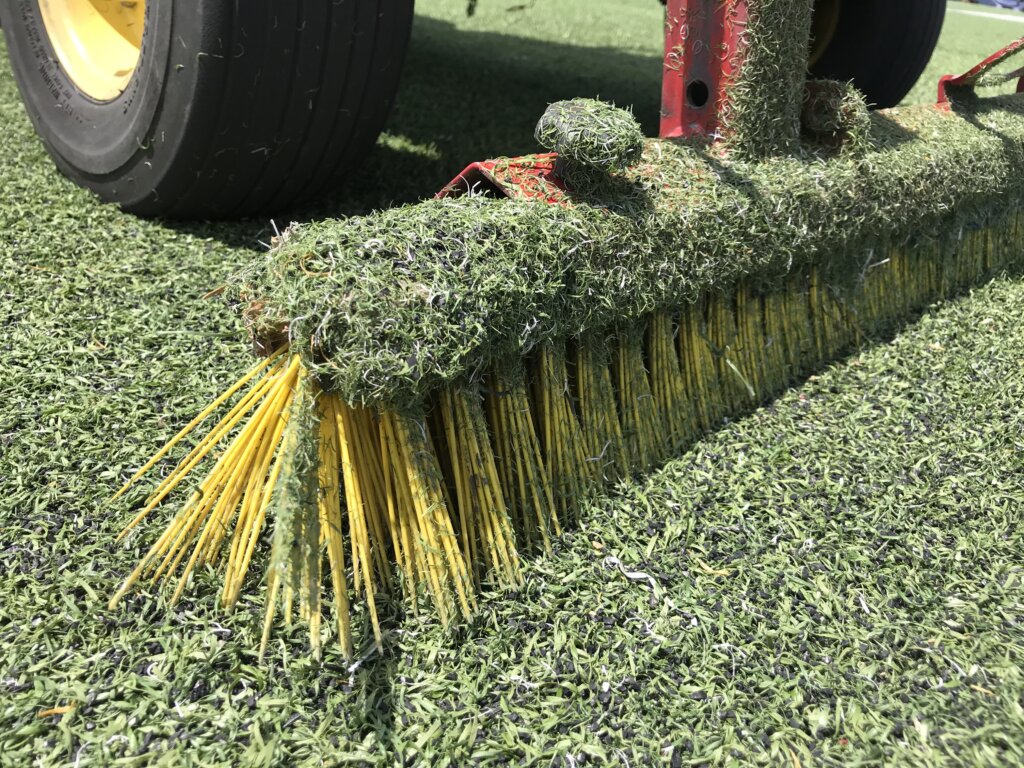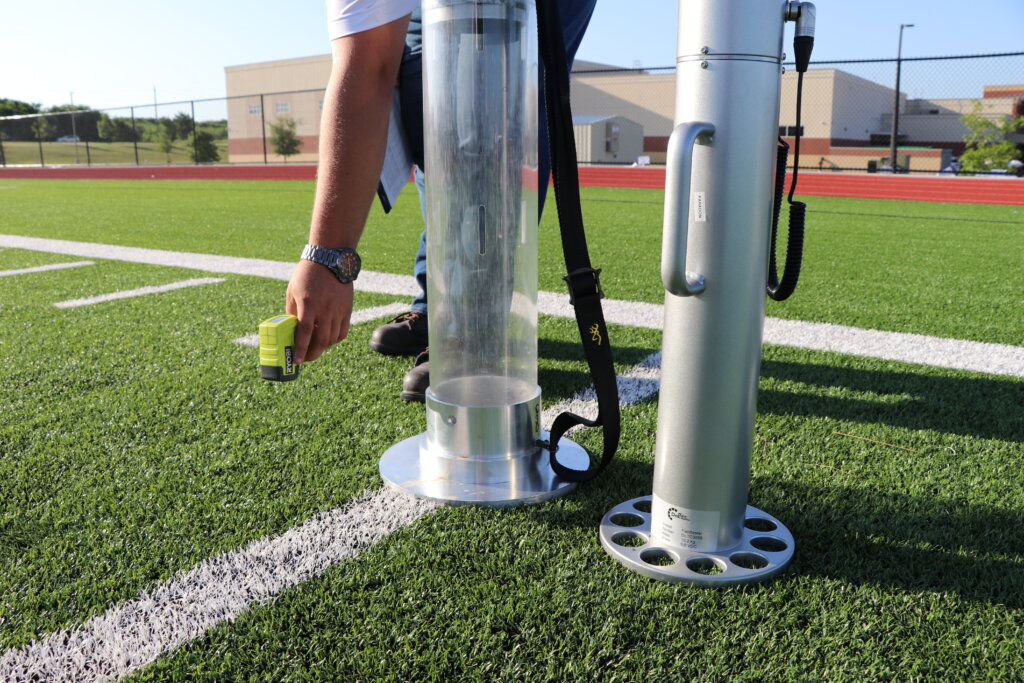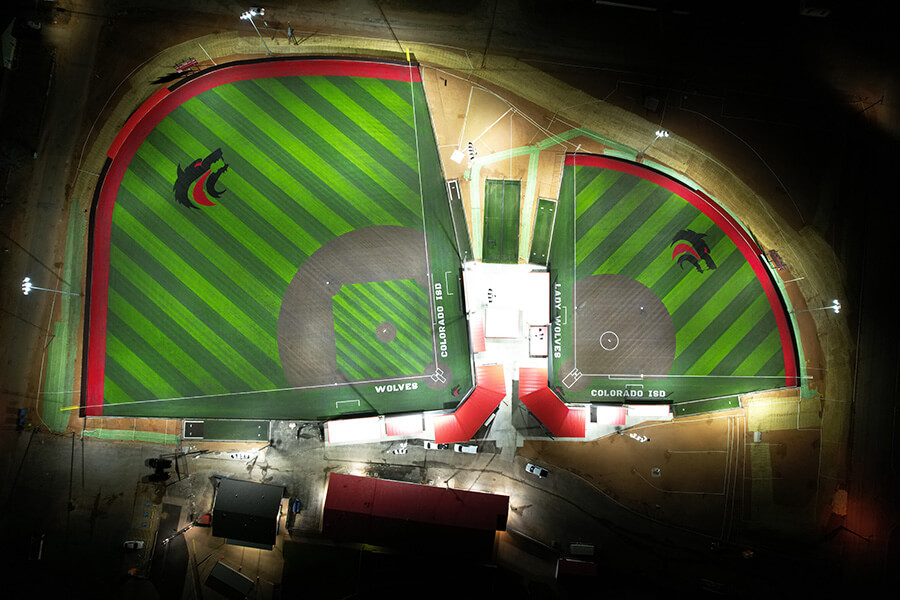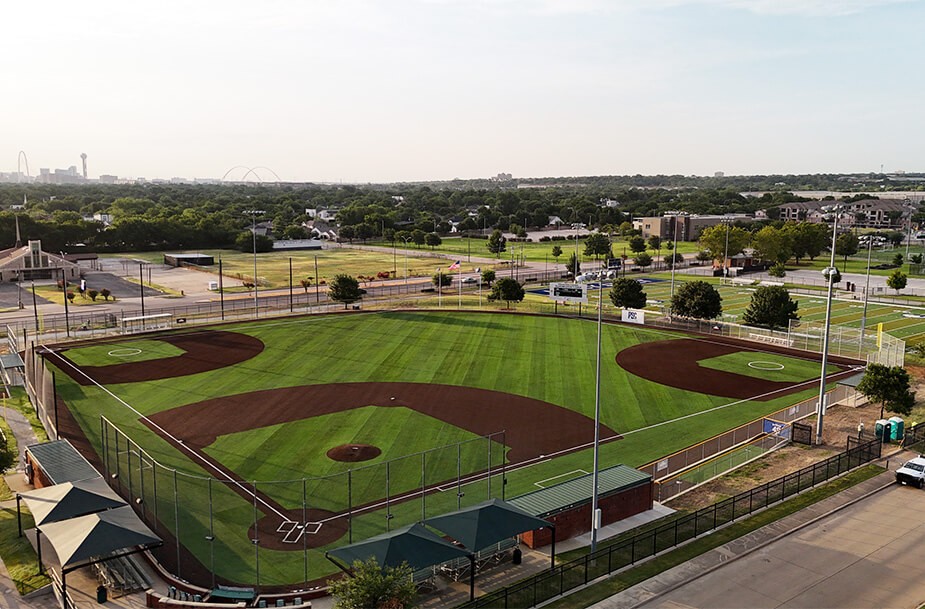Most synthetic turf fields come with an eight-year manufacturer’s warranty, some with ten. Often the expiration of this warranty is considered the signal that it is time to replace a field, but is that the best measure? While a turf replacement often costs significantly less than the original installation it is a major financial decision that should be made thoughtfully and in an informed matter. In this blog, we discuss the key signs that a turf replacement is in order, as well as the role that maintenance plays in the lifecycle management of your field.
Signs of Synthetic Turf Wear to Watch For
There are three key aspects of your turf field to monitor as it ages: aesthetic issues, functional issues, and safety issues. The first two are often observed with the naked eye but the third, safety issues, will require testing with specialized equipment to accurately document.
Aesthetic Issues
Matted, Tired Field Appearance
It’s important to remember that synthetic turf is a manufactured product and even with diligent maintenance it will fade over time. Much like the siding on your house or the playground equipment at your elementary school, turf fibers will fade from the elements. While this dulled appearance is not necessarily indicative of functional or safety issues, it is indicative of environmental wear and could indicate weakness in the fiber (see below).
With use and age, turf fibers will also begin to lay over and give the field a matted look. Matting of turf fiber is also not necessarily indicative of functional or safety issues but can lead to premature fiber wear and loss of traction on the field. While there isn’t much you can do to eliminate fading, regular brushing and grooming of the turf will help restore and reduce the matting of the fiber. While these aesthetic issues may not affect the safety and performance of the field, they underscore the importance of understanding and monitoring your field through its useful life.

Functional Issues
Fiber Breakage/Loss
Small amounts of fiber debris are to be expected as fields age. Regular grooming/sweeping of the field can help minimize the appearance or accumulation of fiber on the surface. However, fiber that easily breaks at the infill level when pulled may result in a noticeable appearance and significant accumulation of loose/broken fibers across the surface. This accumulation of broken fibers can indicate that the fiber has degraded and may continue to degrade at an undesirable rate. The loss of fiber can lead to increased infill migration and negatively affect the ability of the field to be top-dressed. The loss of fiber and resulting infill migration make it difficult to maintain the field and may lead to poor safety or performance metrics because one of the key roles of fiber in the system is to help hold infill in place.
Excessive Seam/Inlay Repairs
As with fiber loss, seam and inlay repairs are common in fields as they age and get more use. Many seams or inlays can be easily fixed by trained technicians but can pose tripping hazards if not remediated in a timely fashion. An annual maintenance plan to address seams and inlays can limit the number of emergency calls to your installer during the busy season, not to mention eliminate the headache of emergency repair calls from your coaches and community users.
Safety Issues
Surface Hardness
Through wear and infill consolidation, your field will get firmer with time and use. While there are multiple metrics to utilize when monitoring the surface hardness of your field (GMax, HIC, force reduction), it is important to be consistent in testing your field so that you can make informed decisions about remediation (de-compaction and/or top-dressing) or replacement.
The aesthetic and functional issues discussed here are observed through visual inspection but are also somewhat subjective in judgment; testing your field will provide objective data that can guide actionable decisions about player safety and surface replacement.

Next Steps
While it’s important for field owners to understand the key signs of wear that could result in a turf replacement it is equally important to know that you don’t have to rely solely on your own judgement with this decision.
If your field is in the second half of its warranty period you should strongly consider annual maintenance to de-compact the infill, clear debris from the surface, and have safety and performance testing performed to gauge the overall health of your field and help maximize the use of your investment.
We take pride in being a trusted partner who will communicate with transparency and objectivity about the realities of your field, and we will help create a long-term maintenance plan suited to the unique needs of your facility and organization. Visit our Maintenance Services page to learn more about this service or complete our contact form and we’ll be happy to schedule a visit to your field.
About Paragon Sports Constructors
Paragon Sports Constructors is a turn-key contractor of natural and synthetic turf sports fields, running tracks and tennis courts based in Fort Worth, Texas. With over 30 years of sports construction experience they are one of the premier sports fields and running track contractors in the South-Central United States. Paragon Sports Constructors is a member of the American Sports Builders Association who remains focused on quality construction practices, choosing to partner with top brand name manufacturers of synthetic turf and track surfacing to provide clients a consistently high-quality project from planning to first use. For more information on Paragon Sports Constructors please visit www.paragon-sports.com or follow them on Twitter @ParagonSportsCo.


